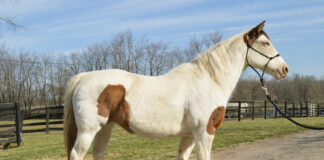Horse ownership is daunting. The amount of information, opinions and different ways of doing things mean there are thousands of variations on how horse health is managed. Luckily, there are several core principles and routines throughout the year that you can follow to make sure your equine partner is in good health for years to come.
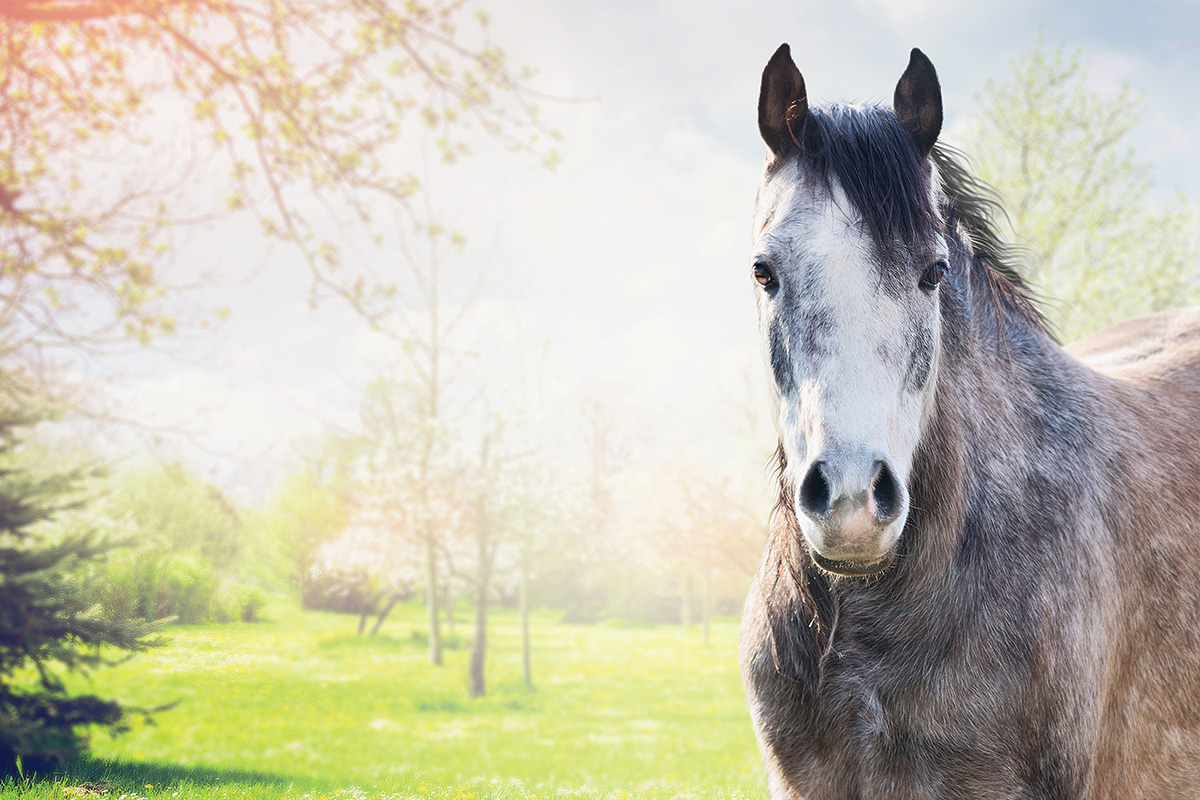
Kathryn Slaughter-Mehfoud, DVM, is an equine surgeon based in Kentucky. Julie Christopher-White, DVM, is a general equine practitioner based in Oklahoma whose skills include acupuncture and chiropractic work.
Daily Horse Health Checks
According to Christopher-White, being familiar with horses’ normal vital signs and appearance means you will pick up on something “off” with his health more quickly. Running through this checklist every time your horse is brought in from the pasture or getting tacked up for a ride means every scratch, mild fever, or rock wedged in the hoof will be noticed immediately.
“If you can have a good [health] history on your horse, it can help the diagnostic side of the healthcare a lot,” says Christopher-White.
General Check
Start the daily health routine with a one-minute check of every inch of your horse, including his belly, between his legs and down his legs, looking for abrasions and swelling.
Hoof Care
Pick out and dry hooves thoroughly if muddy or wet. Slaughter-Mehfoud says slippery ice balls in the feet in the winter and muddy feet in the summer can contribute to the formation of thrush, which is a smelly infection that can eat through the hoof. Thrush often forms around the frog and has a black crumbly or gooey appearance.
Respiratory Rate
Watch the ribcage rise and fall for 30 seconds and multiply by two for breaths per minute. Look for breaths to fall between 8 and 15 per minute.
Hydration Status
Just like with people, staying hydrated is important for a horse’s health. Dehydration can cause colic, which is a life-threatening problem.
The simplest way to check for hydration is to look at a horses’ manure. It shouldn’t be too hard and dry.
Another way to check for hydration is capillary refill time. To assess this, hold your finger against the horses’ gums for a few seconds before releasing and watching them to turn pink again.
“After releasing, count the number of seconds it takes for the gums to return to that pink color. If it takes more than two seconds, the horse is dehydrated,” says Slaughter-Mehfoud.
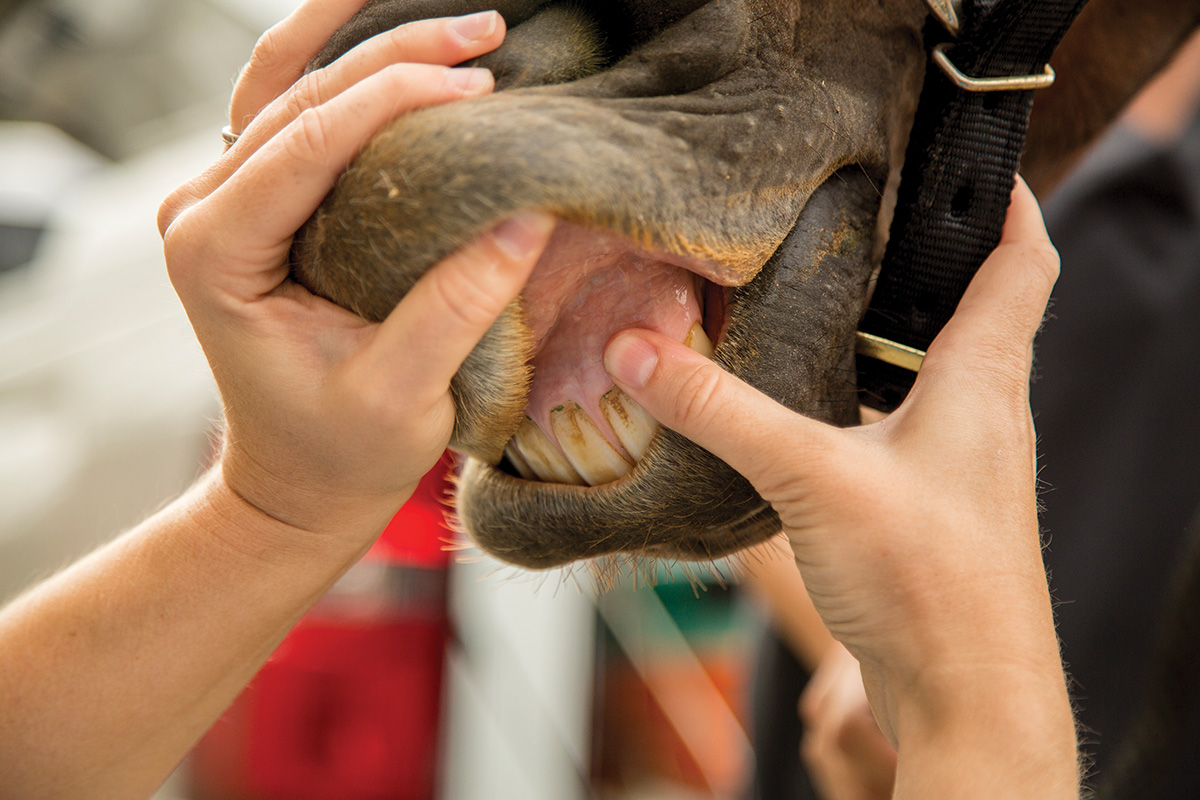
Temperature
A horse’s temperature should be taken rectally with a designated thermometer. The normal range is 99-101.5 degrees Fahrenheit. If a temperature is higher than 101.5 degrees, it could be a sign that a horse is becoming sick. (Be sure to wait at least 90 minutes after exercise before taking temperature.)
Heart Rate
An elevated heart rate can indicate pain or sickness, so having knowledge of your horses’ resting heart rate is important for future reference. A stethoscope is helpful for this, and the heart rate can be faintly heard by firmly pressing the stethoscope behind the left elbow.
Another method of finding the pulse is pressing two fingers under the jaw. In both instances, set a timer for 30 seconds, count the beats and multiply by two. Twenty-four to 48 beats per minute is considered normal.
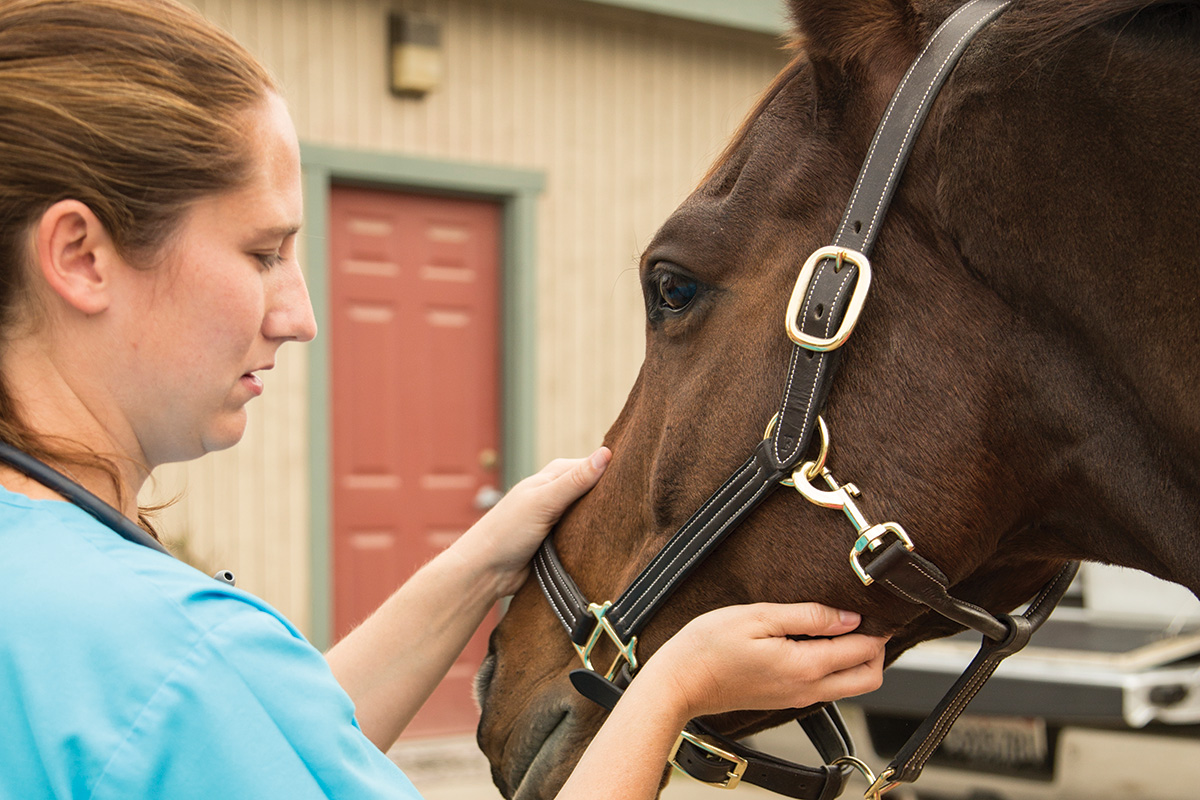
Body Condition Score (BCS)
Horses are scored from 1 to 9 on the Henneke BCS system, with 1 being emaciated and 9 being extremely obese. A score of 5, considered “moderate,” is ideal for most horses, although age and past health history should be taken into account.
“We want you to be able to feel your horses’ ribs by applying mild pressure,” says Slaughter-Mehfoud.
Spring Horse Health Checks
Wellness Exam
Christopher-White recommends a springtime veterinary examination of horses so their general health can be assessed by a professional and any concerns addressed.
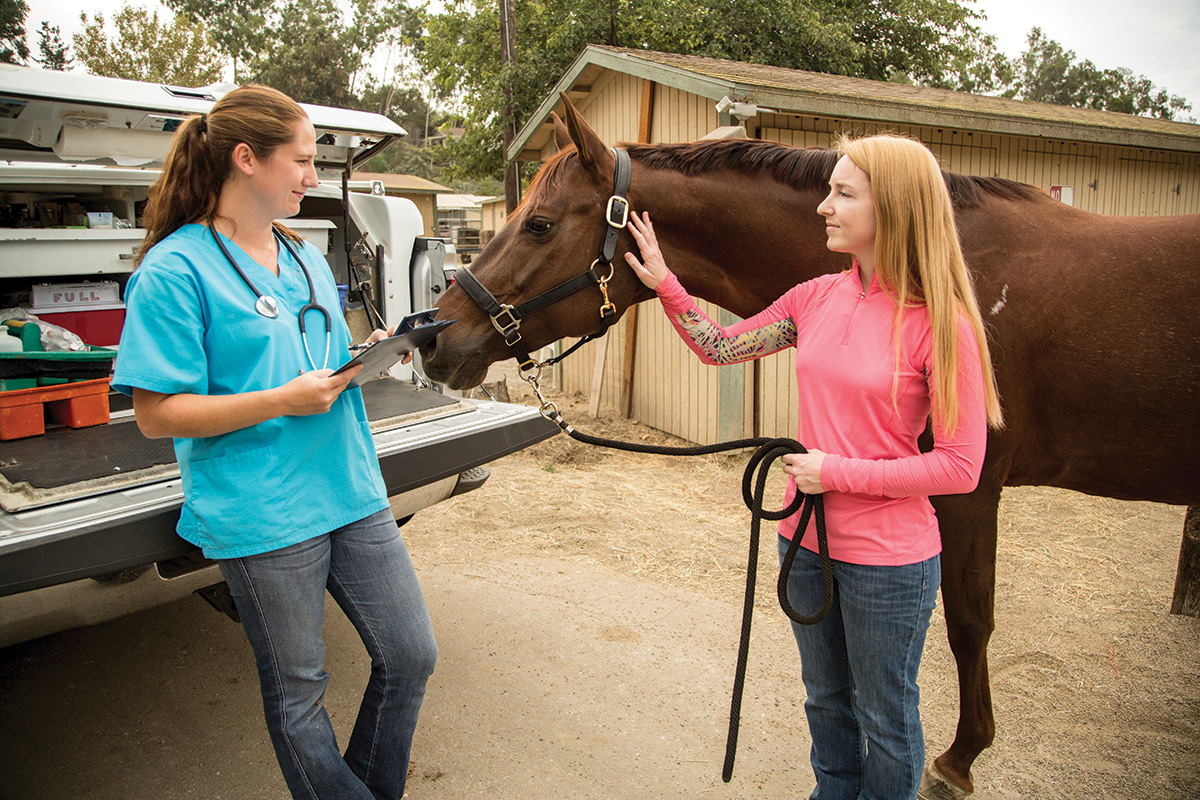
Vaccination
The American Association of Equine Practitioners (AAEP) recommends the Eastern and Western equine encephalomyelitis, rabies, tetanus, and West Nile virus vaccines.
Coggins
A Coggins is a test for equine infectious anemia (EIA), which is a contagious and incurable disease. A negative Coggins test is often required when attending horse shows or for crossing state lines.
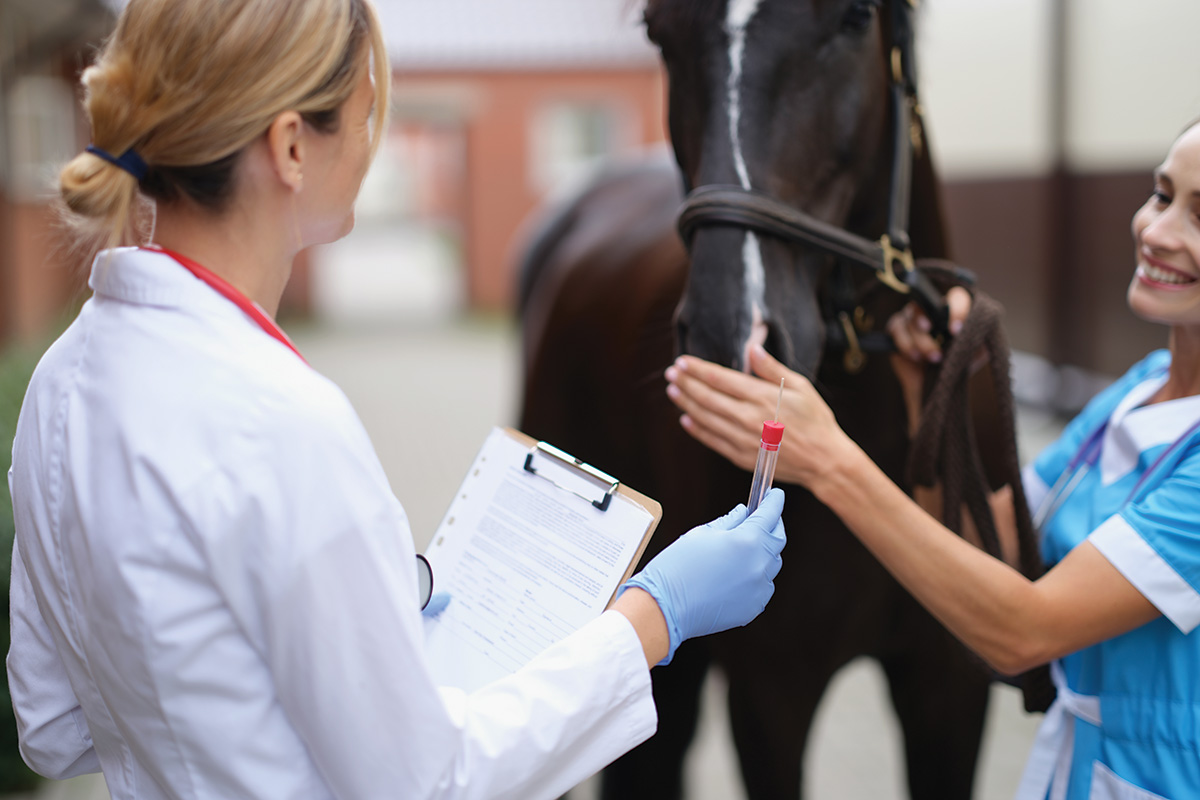
Fecal Egg Count
At the veterinary appointment, ask your veterinarian to do a fecal egg count.
“Submitting a manure sample for a fecal egg count means your veterinarian can advise a correct deworming schedule tailored to your horse,” says Slaughter-Mehfoud.
Veterinary Bloodwork
“Doing annual bloodwork on your horse gives you a baseline on what is normal for him,” says Christopher-White. “A good thing to look at is metabolic panels—insulin, glucose and ACTH—to make sure you’re not getting into metabolic disorders.”
Digital Pulse
Lush springtime grass can cause painful inflammation in the hooves, called founder or laminitis. Slowly acclimate your horse to springtime pastures and feel his digital pulse on the back of each fetlock. According to Slaughter-Mehfoud, a normal leg should have small, steady beats, while a horse experiencing laminitis will have strong, bounding pulses.
Fall Horse Health Checks
Veterinary Exam
Having a horse—even a healthy one—seen by the vet twice a year increases the chances that any health issues will be detected early.
Dental Care
Every horse should have his teeth examined once a year in case they need to have sharp points and other problems addressed. Slaughter-Mehfoud likes to perform dental exams in the fall before the cold weather, when getting the most nutrients out of feed is especially important for keeping weight on.
“Inadequate dental care can lead to choking and impaction colic,” says Slaughter-Mehfoud.
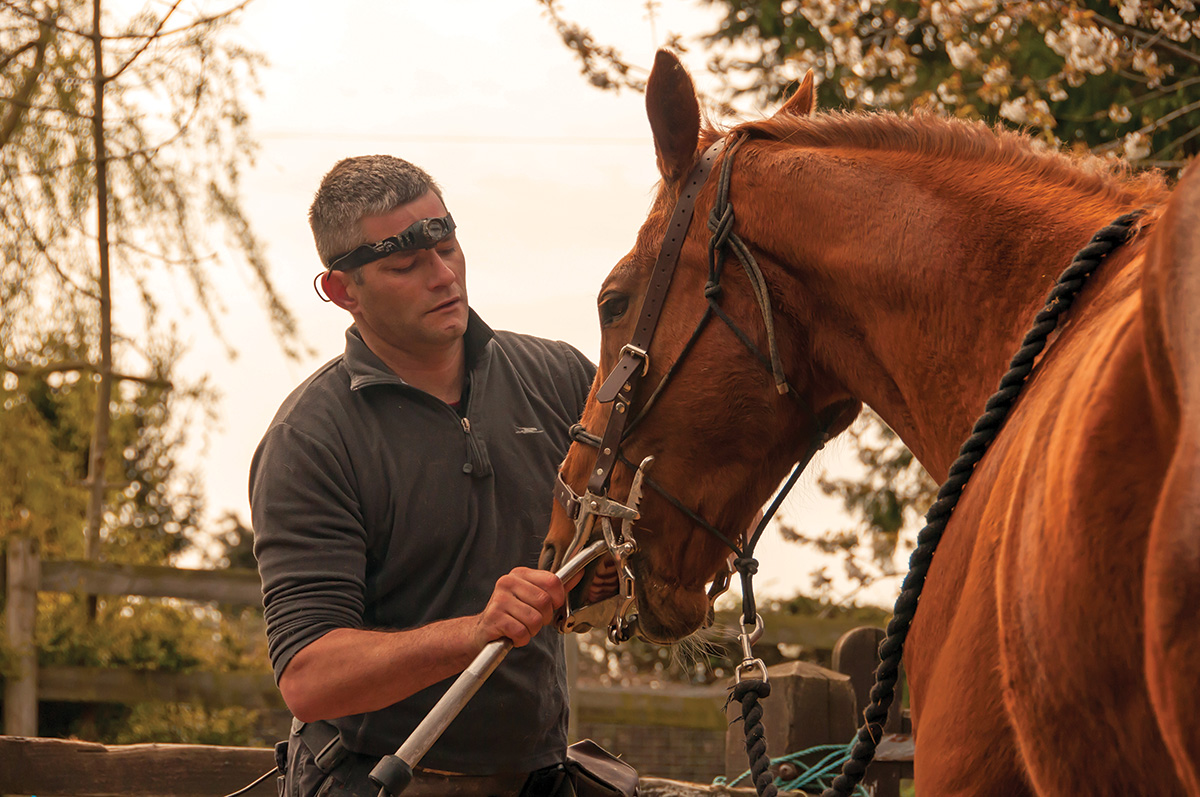
Fecal Egg Count
A spring fecal egg count is good, but twice a year is best. In areas with harsher winters, Slaughter-Mehfoud likes horses to be as prepared as possible to maintain a reasonable body condition score.
Bonus Vaccines
The AAEP recommends vaccines such as equine influenza and equine herpesvirus 1 and 4 for horses that are traveling.
Body Condition Before Winter
Take into consideration your horse’s age and how easily he maintains weight when looking at body condition score heading into winter.
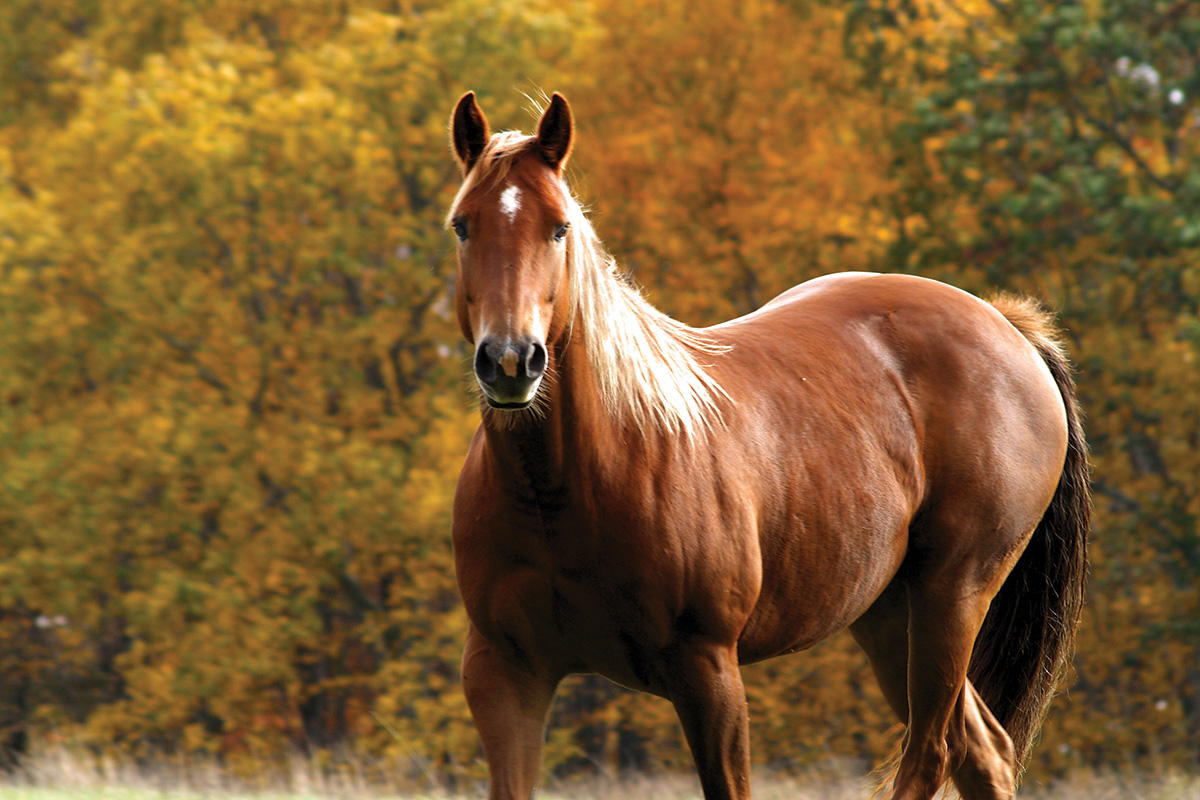
“If your horse is on the leaner side and you’re in Florida, you’re [wouldn’t be] as worried,” says Christopher-White. “But if you’re in Wyoming, [a lean horse before winter] is a bigger concern.”
Incorporating daily and seasonal health-based routines into your horse’s life means every bump can be taken care of, and more serious conditions like a respiratory illness, colic and poor teeth can be addressed in a timely manner.
This article about horse health appeared in the March 2023 issue of Horse Illustrated magazine. Click here to subscribe!




